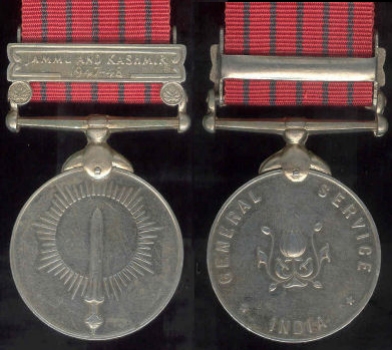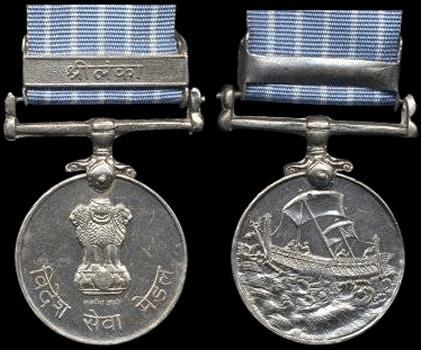During the Korean War armistice negotiations, the prisoner exchange became an important issue for both sides. A survey had been conducted by the United Nations Command which indicated that only 73,000 of approx. 170,000 POWs wanted to return home. Consequently, the UN wanted voluntary repatriation, while the People’s Republic of China wanted forced repatriation. By May 1952, the issue was deadlocked, and the negotiations were stalemated. In truth, the war could have ended in 1952 if the talks held at Panmunjom beginning on Oct. 25, 1951 could have reached a decision regarding prisoner swaps. This was a contentious topic, and one where India finally found the solution which led to the signing of the Korean Armistice Agreement on July 27, 1953. The communist intransigence changed dramatically with the death of Russian President Joseph Stalin (Иосиф Сталин 1878–1953) on March 5, 1953.
Earlier, UN Commander General Mark W. Clark proposed an exchange of sick and wounded soldiers, which was agreed to by the Communists. Thus, Operation Little Switch went underway. This was the first exchange of prisoners, which began on April 20, 1952. The UNC returned 6,670 prisoners, of which 446 were civilians, and 357 were litter cases. In return, the Chinese and North Koreans returned 684 UNC soldiers.
As part of the armistice agreement, with the approval of the United Nations General Assembly, two neutral nation commissions were created to implement and supervise the cease-fire. The Neutral Nations Repatriation Commission (NNRC) was constituted to facilitate the return of all POWs. While the other commission, was the Neutral Nations Supervisory Commission (NNSC) which was to oversee the armistice. Both commissions would be established with two countries from each bloc, and headed by India, underscoring India’s reputation as a neutral country. The UN selected Sweden and Switzerland, while the Chinese Communist Forces (CCF) chose the People’s Republics of Poland and of Czechoslovakia. All five countries involved were initial members of the UN charter.
The NNRC arrived in Korea on July 27, 1953. It was under the chairmanship of the Indian Army Major General K S Thimayya. Indian Ambassador B.N. Chakravarty served as the Alternate Chairman. Upon arrival, Czechoslovakia had 300 personnel, Poland with 300, Sweden with 75, and Switzerland with 96. The representatives of these four countries were also members of the newly created NNSC. The Red Cross Society of India was invited to take part in the process. Prime Minister Jawaharlal Nehru, Major General Thorat, B.S. Puri (Head of the Indian Red Cross), one army surgeon and three staff officers arrived in Korea, representing the Indian government. The South Korea government under Syngman Rhee’s new Government deeply distrusted India’s multi-layered diplomatic approach, particularly its open policy toward North Korea. India’s Prime Minister, Nehru, was not happy with the political attitude of Syngman Rhee, and tensions between the two ensued. To assist the NNRC, India dispatched the 190th Infantry Brigade, which became known as the Custodian Force of India (CFI). The force consisted of five infantry battalions. These men were drawn from the 3 Garwhal Rifles, 3 Dogra, RAJRIF and 6 Jat, with a company, each of 3 Mahar and 2 Para, and a platoon of the 74 Field Engineer Regiment. Ancillary services like EME, ASC, Provost, etc., along with officials of MoD and MEA who were language experts and interpreters also accompanied the CFI. This Custodial Force under Major General S.P.P. Thorat consisted of 231 officers, 203 JCOs and 5696 other ranks. It had been decided that the NNRC would provide 120 days of custody, after which, those POWs refusing repatriation would be granted civilian status. The CFI was tasked with keeping the POWs safe and in custody, while respecting their human rights, which enabled the prisoners to decide for themselves on their repatriation destinations without coercion. Because of the tension between Korea and India, when the Custodial Forces of India (CFI) arrived in Inchon harbor, the South Korean government did not allow them to step foot onto Korean soil. The UNC had to use helicopters to transport the CFI personnel to an area near Panmunjom 판문점. India was also not invited to the Political Conference on the Korean issue in Geneva in April 1954 because of objections from the Rhee administration.


Indian troops serving in the NNRC were eligible for the same Indian awards for their Korean service as those who served under the U.N. Command. The only exception was the U.N. Korea Medal because the CFI was a neutral force and not attached to the U.N. Command.
A second and larger exchange of POWs, called Operation Big Switch, began on August 5, 1953. The UNC handed over 75,823 prisoners (70,183 North Koreans and 5,640 Chinese). The PVA/KPA repatriated 12,773 UNC POWs (7,862 South Koreans, 3,597 Americans, 945 British, 229 Turks, 40 Filipinos, 30 Canadians, 22 Colombians, 21 Australians, 12 French, 8 South Africans, 2 Greeks, 2 Dutch, and 1 prisoner each from Belgium, New Zealand, and Japan). Most of the POWs had been repatriated by September 1953.
The Custodial Forces of India (CFI) gathered the 22,959 non-repatriated prisoners into camps. This was a significant number of prisoners who expressed a desire, not, to return to their home country. Eventually, 22,604 communist soldiers (7,900 North Koreans and 14,704 Chinese), declined repatriation. On September 24th, the PVA/KPA handed over their UNC non-repatriates, comprising 23 Americans and one Briton, along with 333 South Korean UN soldiers to the NNRC. Those POWs, refusing to return to their homeland, were placed under the NNRC for 120 days, which allowed them time to rethink their decision. Each of the belligerent nations involved in the prisoner exchange was provided an opportunity to explain to their countrymen, why they should return to their homeland. Between October 15th and December 23rd, the explanation period for non-repatriates took place. Large groups of the communist prisoners refused to even listen to the PVA/KPA representatives. There were 137 Chinese soldiers who chose to return to China. Two Americans and eight South Koreans decided to return to the UNC. In addition, 325 Koreans, 21 Americans, and 1 Briton voluntarily decided to stay with the communists. 21,839 communist soldiers decided to remain in the West. In the early part of 1954, the Korean non-repatriates were released. The Chinese were shipped by plane and boat to Taiwan. There were 88 anti-communist POWs (74 North Koreans, 12 Chinese and two South Koreans) who decided to go with the Custodian Force when they returned to India. When they arrived in India, 2 Chinese and 6 North Korean POWs were repatriated back to their respective countries, as they requested. Fifty-five POWs (49 Koreans and 6 Chinese), including Im Kwan-taek, agreed to go to Brazil, while 14 others (12 Koreans and 2 Chinese) went to Argentina. The rest (9 Koreans and 2 Chinese, including Hyeong Kim, Ki-Cheol Ji and Hyun Dong-hwa) decided to remain in India.
In February 1954, with the NNRC task being completed, the commission was dissolved. However, the Communists sporadically released a few more UN POWs up to August 1955, with no explanation for the delay. It is known that thousands of South Korea’s soldiers were captured during the war, who were not returned during the prisoner exchanges which took place in 1953. Most are presumed dead, but the South Korean government estimated in 2007 that some 560 South Korean prisoners of war were still alive in North Korea. North Korea has consistently denied that it holds any South Korean POWs. However, in 1994, Cho Chang-ho 조창호 (趙昌浩 1930-2006), a former South Korean soldier during the war, escaped from North Korea. As of 2008, 79 former South Korean soldiers had also escaped from North Korea. There are reports that several hundred US prisoners of war may not have been returned by North Korea.
India’s humanitarian involvement in the CFI, NNRC and NNSC, eventually won a belated approval from Korean President Rhee. He would later say, “We want to forget unpleasant things about the Indian guards who had done so much under difficult circumstances and want to say goodbye to them with thanks”.
Gen. Thimayya went on to become the Indian Chief of Army Staff from 1957-1961. After his retirement, and because of his reputation of impartiality that he displayed in Korea, the UN again requested his services in 1964 to command UN troops operating on Cyprus. He would, however, die of a heart attack in December 1965, at the age of 59.
South Korea and India established diplomatic relations in 1973. India agreed to upgrade bilateral relations to a “Special Strategic Partnership” during former President Park Geun-hye’s state visit to India in 2014. The agreement was signed during Indian Prime Minister Narendra Modi’s visit to Korea in 2015. In December 2019, South Korea celebrated an Indian Army officer as a Korean War Hero. Lieutenant Colonel A.G. Rangaraj was the commander of the 60 Para Field Ambulance.
